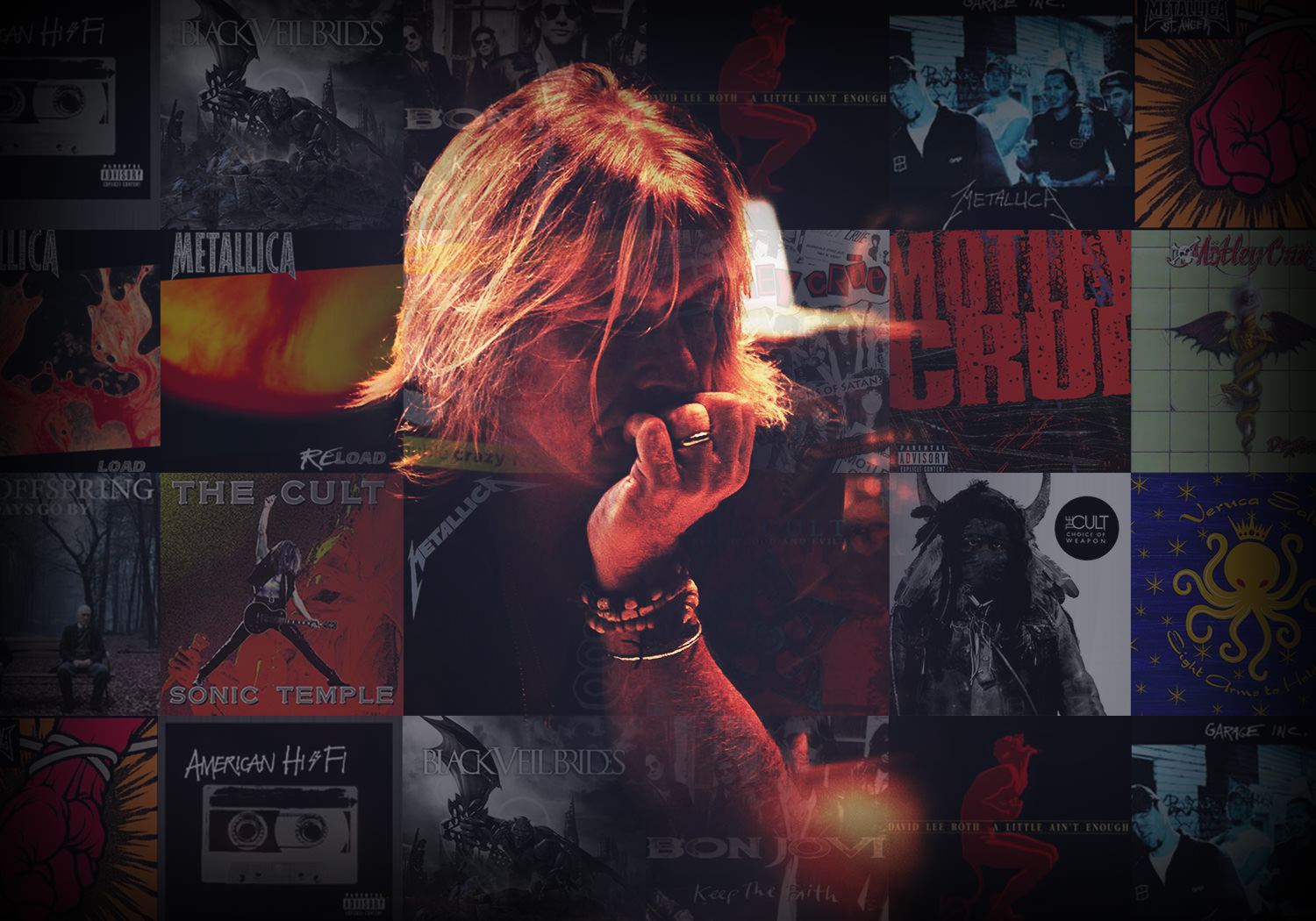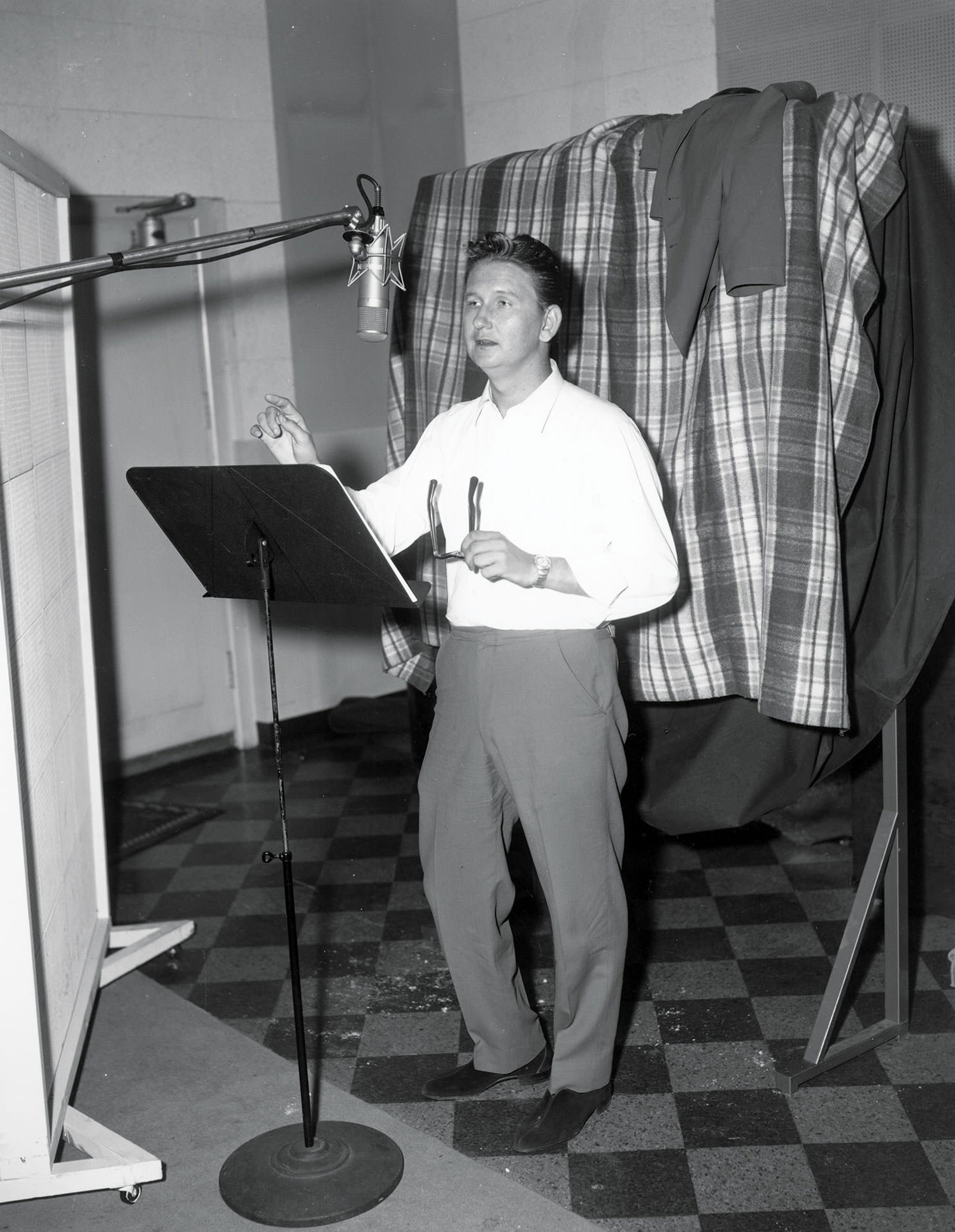One of the biggest stumbling blocks for first-time recordists is tracking overhead drums. When I get a song to mix I usually solo these tracks first, and it's always a relief to hear simple, clear sounds that conjure up an aural image of one person playing one instrument — but this rarely happens. There are many ways to mic drums, and also many ways to go astray. Good mic preamps and good mics are important, but having the mics in the right places is the most important.
In a live situation, such as a loud electric band in a club or small room, close mic'ing of the drum kit is probably necessary if you want to do any modifications to the sound later, due to the sound from the other instruments oozing into the drum mics. You might be used to the live thing if you have a history of playing in clubs. If you can't find a place to stand near the drummer where the kit alone sounds great and clear without a guitar amp blowing you away, then close mic'ing may be the only way to go. But when it's only the drums that the mics will hear, with the drummer in a separate room or playing alone, your mic'ing style should be different. Let's consider an ideal scenario: 1) The room sounds good (big enough in all three dimensions, with good acoustic proportions and without a lot of honks and resonances and reflections); 2) The drum kit sounds good, cymbals included; and 3) The drummer plays well, in a balanced, dynamic way. You should be able to capture the kit with two identical model cardioid condenser microphones overhead (two for some stereo imaging and because drum kits are "wide" instruments) and maybe a kick mic as well, to catch the "ground floor." Add in a touch of close snare mic, close floor tom mic and maybe a room mic, and you should be good to go. When overhead mics become just a way to document cymbal crashes, it's much more laborious (and expensive) during mixing to create that coherent, glued- together sound out of a bunch of disjointed smacks and thuds, and the time-delay phase problems from all those mics can easily add up to mush. The sound is in the air, not in the wood.
If you are recording in your square spare bedroom, with a low ceiling and lots of windows, those close mics might help a lot. But the image of that single instrument, "the drum kit," should still be there when you solo the overheads.
Regardless of whether your situation is ideal or funky, you want to avoid the blurry, muddled sound you get when the mics are "close but no cigar." If the mics are positioned badly it's really hard — if not impossible — to rectify this later in mixing. You want to be able to pan both the overheads to the center and still hear a clear, full sound without the "phasey" sound of slight time delays between mics. This can be especially evident on "centered" sounds like snare hits.
For all these recipes, keep in mind that you might need to have the mic pads ("-10 dB" or "-15 dB") switched on, as drums can get pretty loud and can sometimes overload the mic's electronics.
Overheads Recipe 1: Keep it simple. Go buy an X/Y metal stereo bar attachment and put your two matched mics on it. Bring the front of the mics to a point, without letting them quite touch, then tilt them slightly. Attach the bar to the end of a boom stand with a good weight on the end (or a sandbag). Put it over the drums looking down. You can put the stand in front of the kit and place the mic array so it looks down on the kit above the snare. Move it around little by little until you can hear all the different drums clearly and balanced (except the kick, which is further away). Another good option (I learned from producer Mark Williams) is to put the stand behind the kit and "record the drummer's spine." This gives you a bit more hi-hat but is more like what the drummer hears, as it's above his or her ears. You also get more of the beater head of the kick. Either way, listen and move it higher or lower, and make sure you are capturing the cymbals enough. When you put an X/Y pair in mono, it will always sound good since the mics are in phase.
Now add a kick and snare mic — it's the 21st century after all. Add a floor tom mic, rack tom mic, a compressed dynamic mic behind the seat is cool, room mics can be great or even a hi-hat mic. But remember, these are to supplement the overheads not the other way around.
Overheads Recipe 2: Sometimes a mono overhead, centered over the top of the kit and high enough to hear the width of the kit, will catch a great sound. You can make the mix dance by panning the other rhythmic instruments hard left and right and keeping the drum imaging in the center. One mic is as phase- coherent as it gets! I like ribbon mics for mono overheads, but only if the ceiling isn't too low or reflective. A mix with mono drums can be very exciting and punchy.
Overheads Recipe 3: This three mic — top, side and kick — technique is by far my favorite, but it may be an acquired taste. It was described to me years ago (by Don Dixon) as a variation on the "Glyn Johns" overheads. Large diaphragm condensers are best here, but those skinny mics will work too. First, put one mic facing down above the snare, a bit toward the rack toms, high enough to "see" the cymbals — maybe three to five feet up. The higher it is the roomier the drums will sound — a traditional measurement was two drumstick lengths. Next, measure exactly the distance from the center of the snare to the front of the mic. Now the fun begins. Put the other mic in back of the drummer, on the floor tom side, looking to the side of and just a bit lower than his shoulder and angled down at the top snare head. (The Johns' technique reportedly had the mic on the side, looking right over the floor tom, pointed at the snare. I like the sound higher and from the back better, you can try both.) Measure and move it until it is exactly as far from the center of the snare as the first (overhead) mic. Note that the drummer's body will hide the sound of the hi-hat a bit from this mic This is the cool part: Pan them left and right, with the top one on the hi-hat side and the back one on the floor tom side. I usually only put them 50 percent wide, but you can play around with it. Add a kick drum mic into the center and you not only have the sound of the drum kit in that room, you have the recognizable vibe of a hundred classic records. The four mic version of this adds a close snare mic, usually a good thing to have just in case.
There are many other cool ways to position overhead mics, but when you aren't sure if you can trust your monitoring speakers, you should consider keeping it simple by going with one of the above.
There is no one right way to record drums. But if you are recording for the first time, you can bring a smile to your mixing engineer's face later by starting out with the above recipes.





